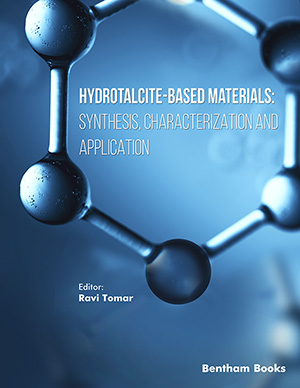
Abstract
Black cumin, Nigella sativa (NS), which is also known as black seed (Kalijeera), is an annual flowering plant from the Ranunculaceae family. Its seeds were used in most ancient medical systems. For ages it was considered to be a panacea. It is rooted in our traditions and has flourished into an intensively investigated medicinal plant. There is an abundance of reports on the biological activities of Nigella sativa seeds or extracts. The spectrum of its activity is impressive and includes antimicrobial, antiviral, anticancer, antimalarial as well as an antidiabetic or immunostimulatory potency. In this review both in vitro and in vivo results are gathered and the results of clinical trials are discussed. Patents and the industrial use of NS as both a food supplement and as animal feed are also mentioned. An analysis of the literature data showed that the comprehensive investigations of Nigella sativa are fairly well translated into actual everyday healthcare. The data presented in this review reveals future use of this valuable plant.
Keywords: Anticancer, antimicrobial, gastroprotective, Nigella sativa, thymoquinone.
The Natural Products Journal
Title:Nigella sativa – A Functional Spice From A Pharaoh’s Tomb to Modern Healthcare
Volume: 6 Issue: 1
Author(s): Anna Mrozek-Wilczkiewicz and Robert Musiol
Affiliation:
Keywords: Anticancer, antimicrobial, gastroprotective, Nigella sativa, thymoquinone.
Abstract: Black cumin, Nigella sativa (NS), which is also known as black seed (Kalijeera), is an annual flowering plant from the Ranunculaceae family. Its seeds were used in most ancient medical systems. For ages it was considered to be a panacea. It is rooted in our traditions and has flourished into an intensively investigated medicinal plant. There is an abundance of reports on the biological activities of Nigella sativa seeds or extracts. The spectrum of its activity is impressive and includes antimicrobial, antiviral, anticancer, antimalarial as well as an antidiabetic or immunostimulatory potency. In this review both in vitro and in vivo results are gathered and the results of clinical trials are discussed. Patents and the industrial use of NS as both a food supplement and as animal feed are also mentioned. An analysis of the literature data showed that the comprehensive investigations of Nigella sativa are fairly well translated into actual everyday healthcare. The data presented in this review reveals future use of this valuable plant.
Export Options
About this article
Cite this article as:
Mrozek-Wilczkiewicz Anna and Musiol Robert, Nigella sativa – A Functional Spice From A Pharaoh’s Tomb to Modern Healthcare, The Natural Products Journal 2016; 6 (1) . https://dx.doi.org/10.2174/2210315506999151209100649
| DOI https://dx.doi.org/10.2174/2210315506999151209100649 |
Print ISSN 2210-3155 |
| Publisher Name Bentham Science Publisher |
Online ISSN 2210-3163 |
Call for Papers in Thematic Issues
Recent Advances in Biotransformation of Bioactive Terpenoids using Aspergillus niger
Biotransformation is the reaction catalyzed by biological catalysts of either isolated enzymes or whole cell cultures of microorganisms. This process has been extensively applied in the conversion of bioactive terpenoids with high regio- and stereospecifity. This process has been also applied in the lead discovery and development. Aspergillus niger has ...read more
 25
25 1
1
- Author Guidelines
- Graphical Abstracts
- Fabricating and Stating False Information
- Research Misconduct
- Post Publication Discussions and Corrections
- Publishing Ethics and Rectitude
- Increase Visibility of Your Article
- Archiving Policies
- Peer Review Workflow
- Order Your Article Before Print
- Promote Your Article
- Manuscript Transfer Facility
- Editorial Policies
- Allegations from Whistleblowers
Related Articles
-
Structure-Based Docking Studies of GLUT4 Towards Exploring Selected Phytochemicals from Solanum xanthocarpum as a Therapeutic Target for the Treatment of Cancer
Current Drug Discovery Technologies Radiolabelling of Ascorbic Acid: A New Clue to Clarify its Action as an Anticancer Agent?
Current Radiopharmaceuticals Nuclear Medicine: Proof of Principle for Targeted Drugs in Diagnosis and Therapy
Current Pharmaceutical Design Local Activation and Systemic Dysregulation of T Lymphocytes in Sjögren’s Syndrome
Current Pharmaceutical Biotechnology Exogenous Expression of WNT7A in Leukemia-Derived Cell Lines Induces Resistance to Chemotherapeutic Agents
Anti-Cancer Agents in Medicinal Chemistry Inspection and Remedy of Cervical Cancer Using Nanoparticles
Nanoscience & Nanotechnology-Asia Carbon Nanotubes: Classification, Method of Preparation and Pharmaceutical Application
Current Drug Delivery HPV-mediated Cervical Cancer: A Systematic Review on Immunological Basis, Molecular Biology, and Immune Evasion Mechanisms
Current Drug Targets The Role of Cancer Biomarkers in HIV Infected Hosts
Current Medicinal Chemistry Chemistry and Pharmacological Properties of Some Natural and Synthetic Antioxidants for Heavy Metal Toxicity
Current Medicinal Chemistry New Insights into HLA-G and Inflammatory Diseases
Inflammation & Allergy - Drug Targets (Discontinued) Role of the Renin-Angiotensin System in Gynecologic Cancers
Current Cancer Drug Targets Neurotrophic Factors for the Investigation and Treatment of Movement Disorders
Current Medicinal Chemistry - Central Nervous System Agents Coffea arabica Bean Extracts and Vitamin C: A Novel Combination Unleashes MCF-7 Cell Death
Current Pharmaceutical Biotechnology Anticancer Peptides and Proteins: A Panoramic View
Protein & Peptide Letters Identification and Analysis of RNA Editing Events in Ovarian Serous Cystadenoma Using RNA-seq Data
Current Gene Therapy Enzymes To Die For: Exploiting Nucleotide Metabolizing Enzymes for Cancer Gene Therapy
Current Gene Therapy Microwave-Assisted Domino Cyclization Reactions
Current Microwave Chemistry Gold Nanoparticles as Carrier(s) for Drug Targeting and Imaging
Pharmaceutical Nanotechnology The Association of Very High Hair Manganese Accumulation and High Oxidative Stress in Mongolian People
Current Aging Science

























